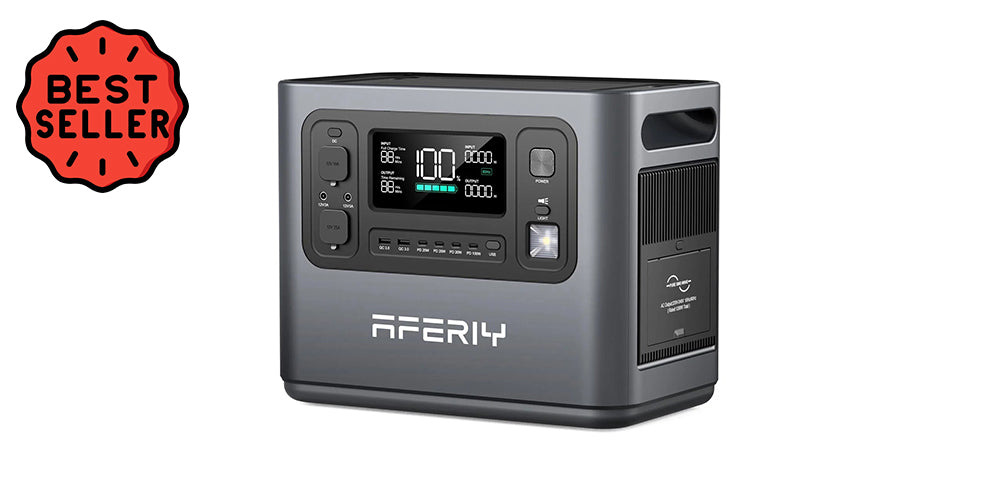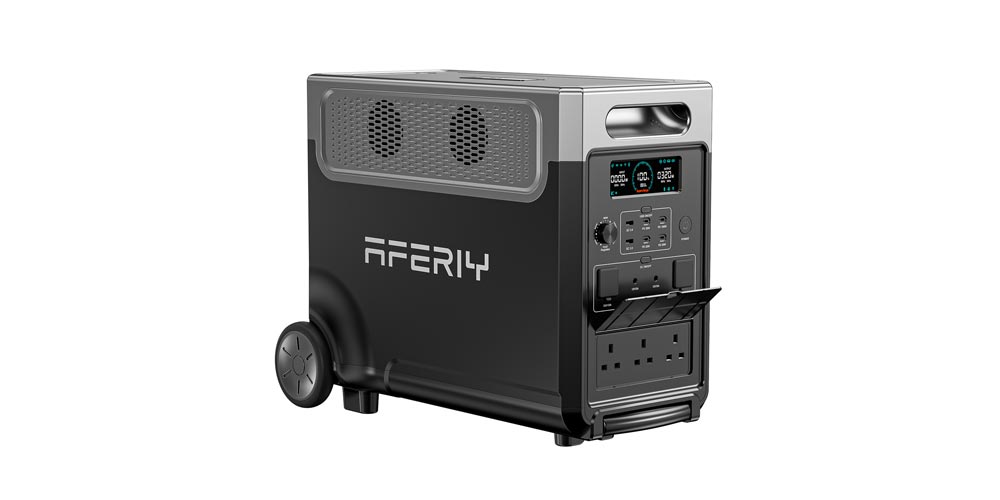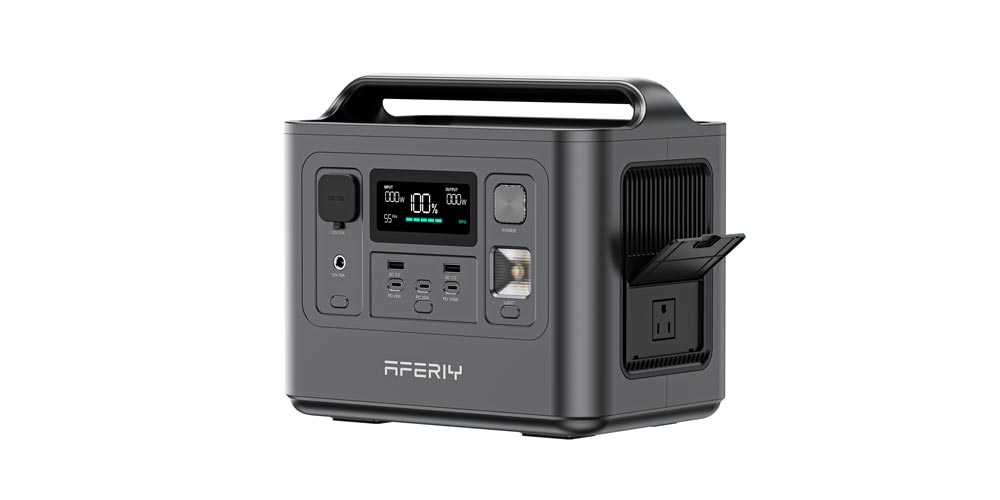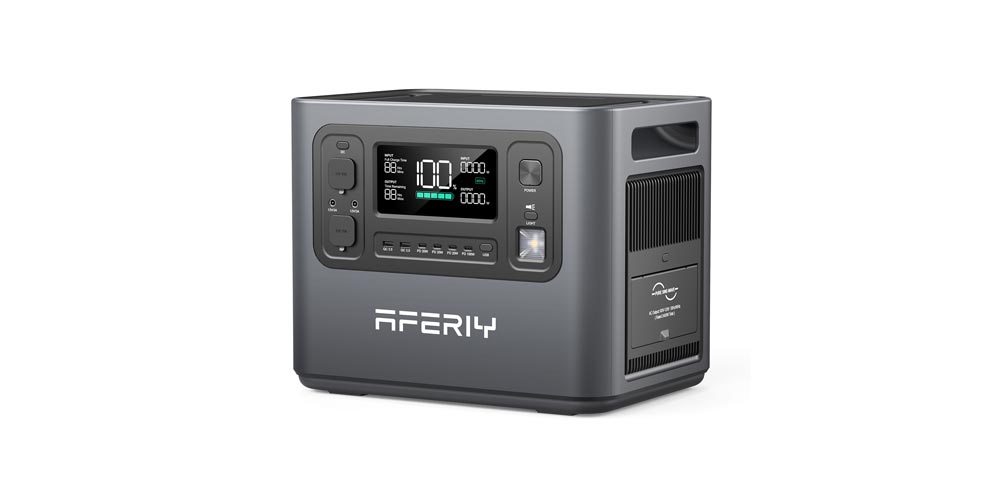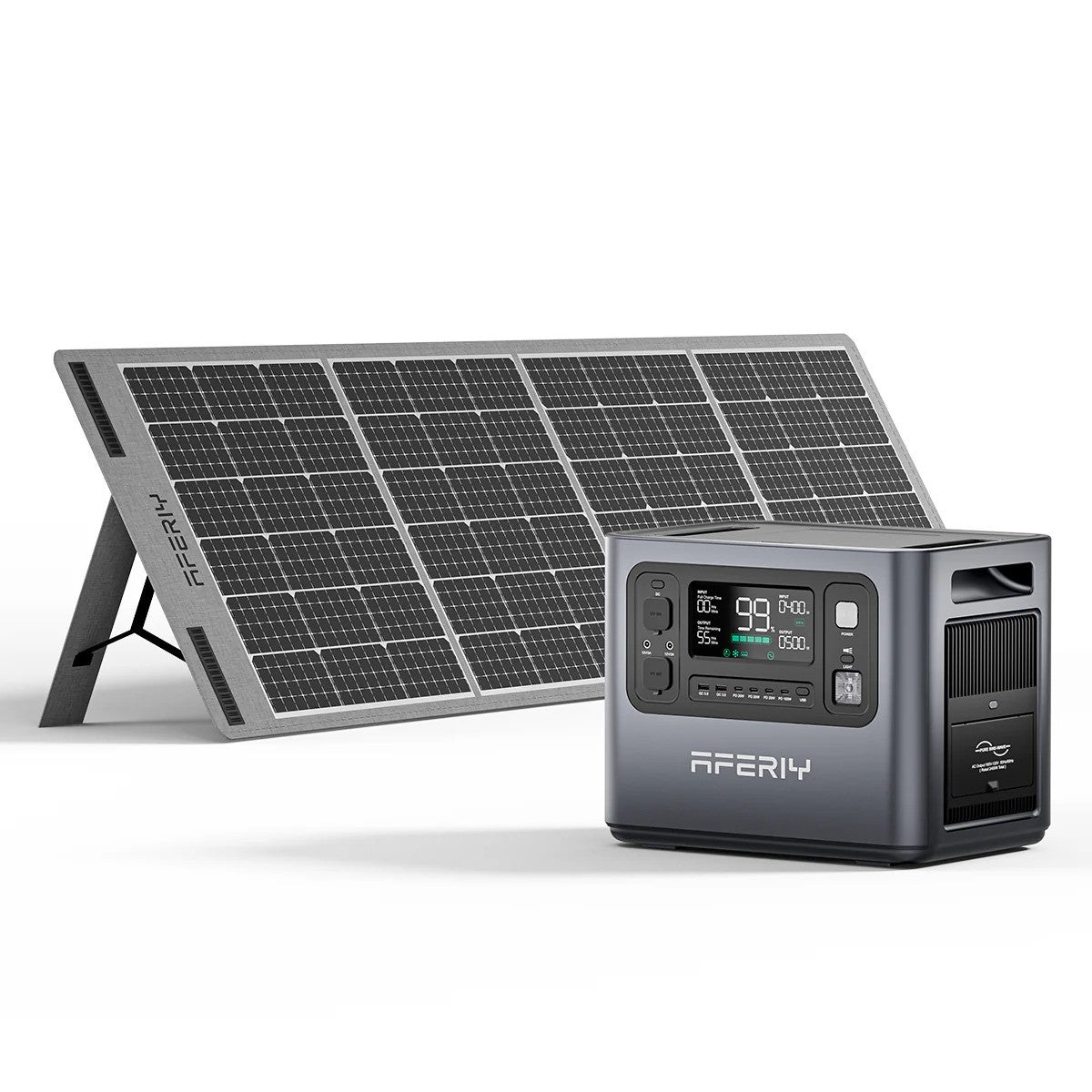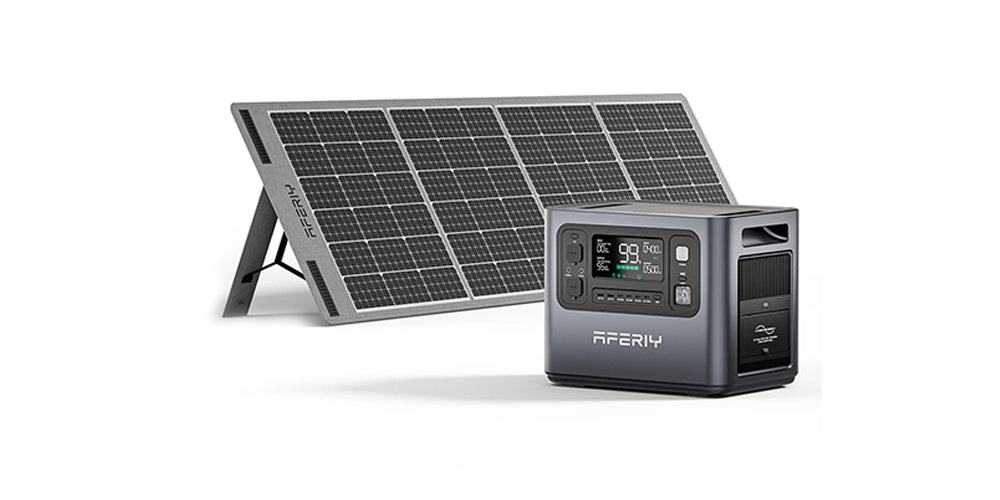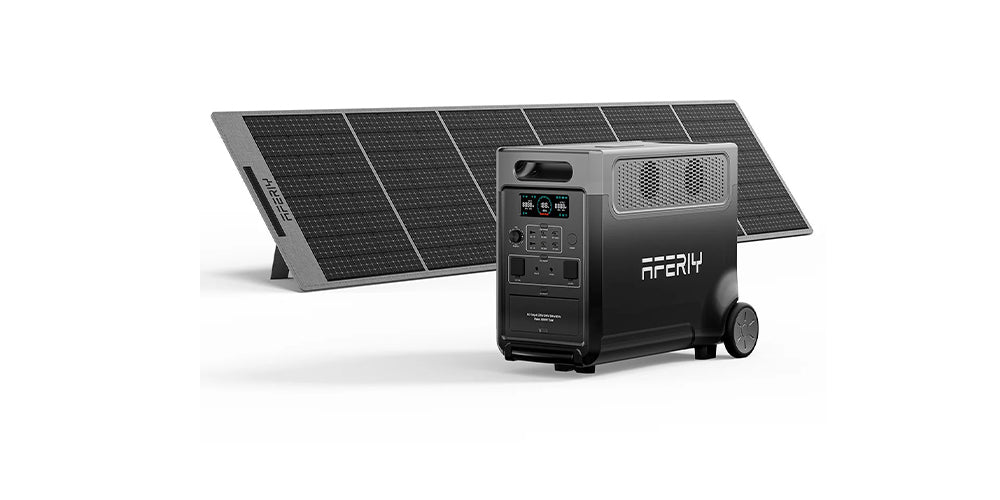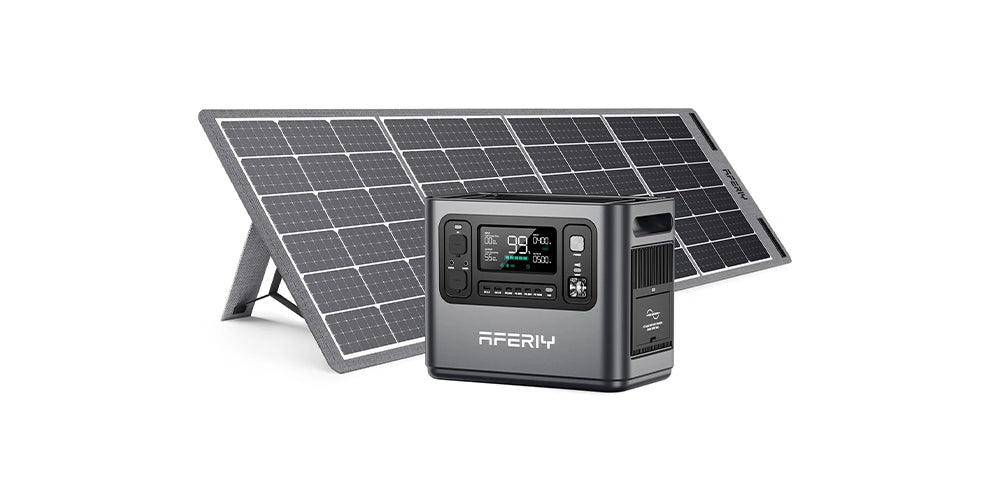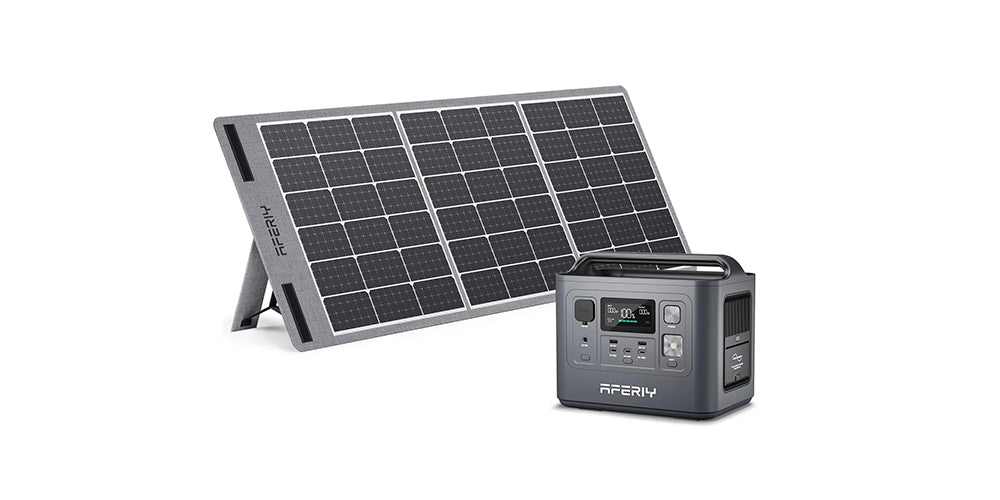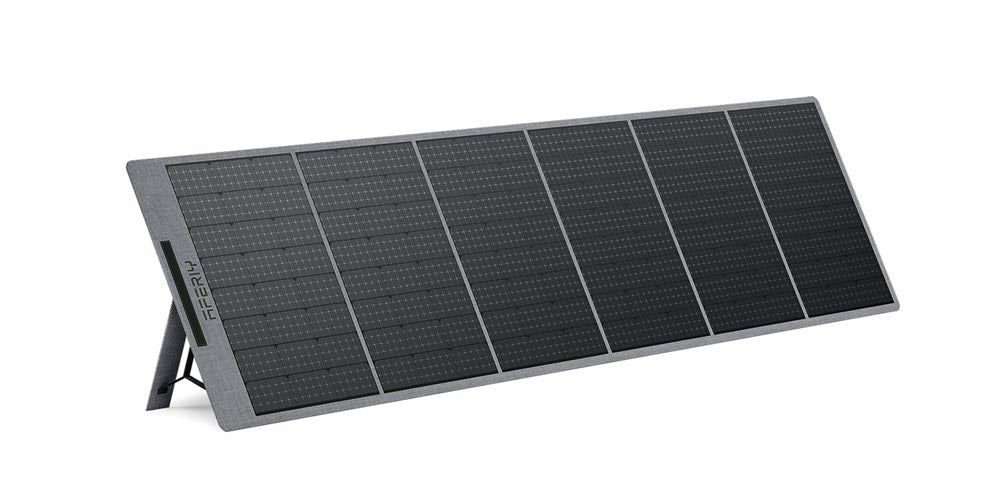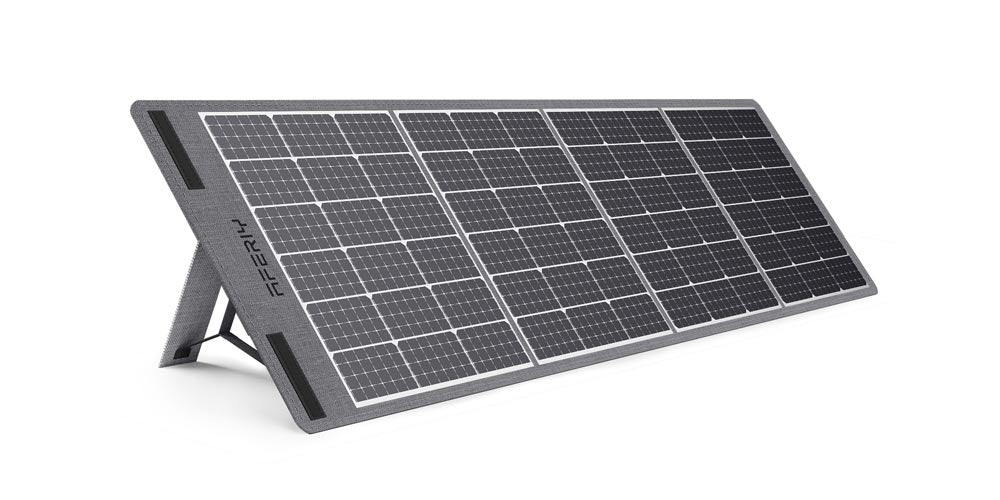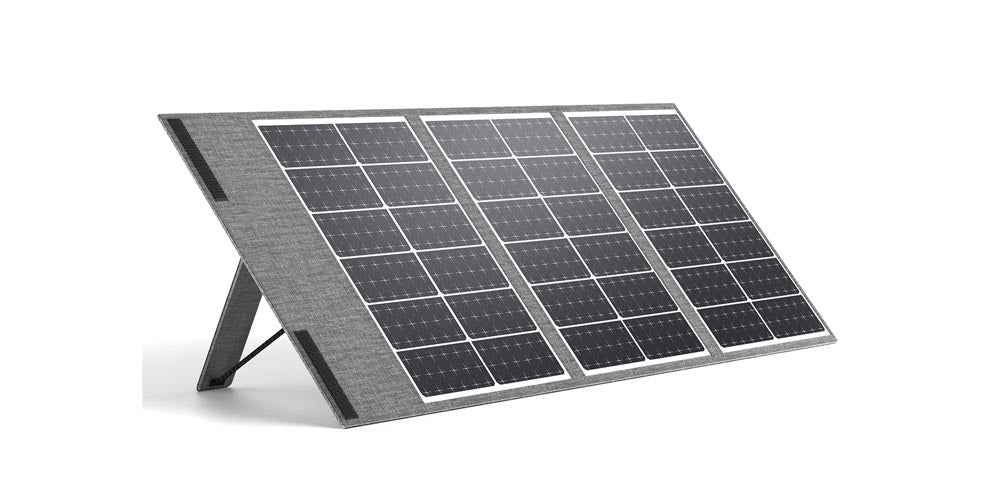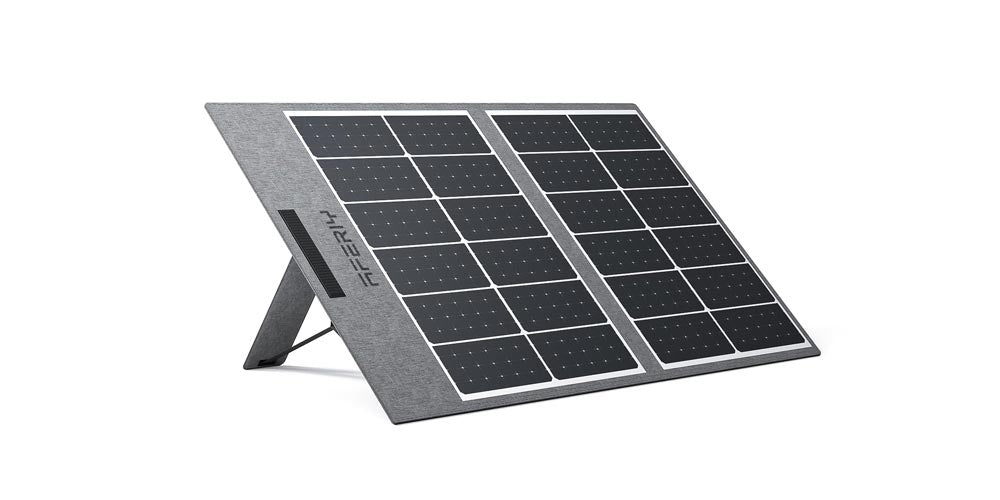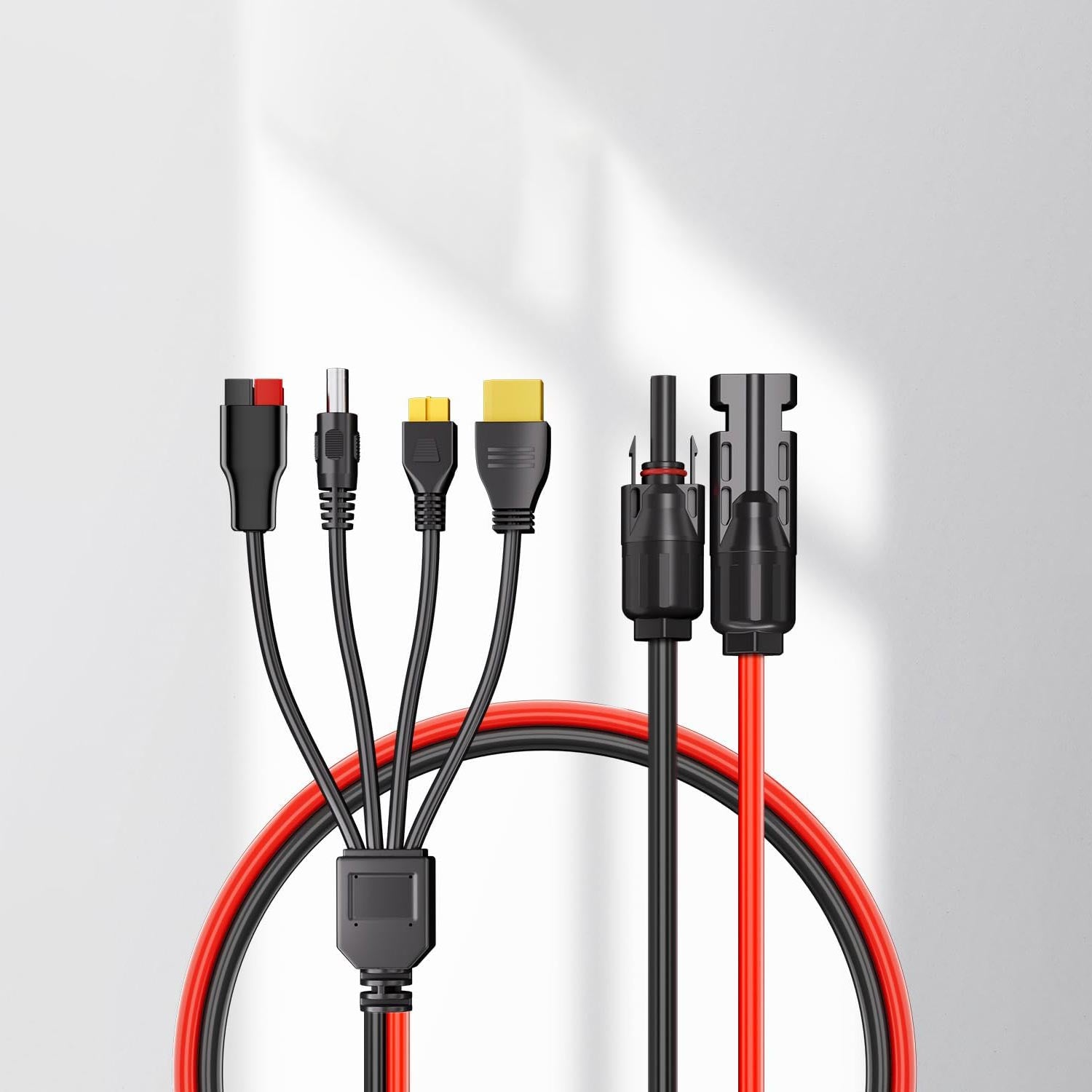AFERIY Nano100: The New Solar Power Bank
In a world where we increasingly rely on our electronic devices—smartphones, laptops, Wi-Fi routers, gaming consoles, or drones—a reliable and high-performing power bank has become essential. However, despite their popularity, traditional power banks suffer from many limitations: compatibility issues, insufficient power, safety concerns, and even airline restrictions.
This article highlights the common shortcomings of traditional power banks and introduces an innovative solution: the AFERIY Nano100, a compact, powerful, airline-approved power bank designed for complete mobility.
The Limitations of Traditional Power Banks
Traditional power banks have several drawbacks that can make everyday use frustrating.
Misleading Capacity
Some power banks claim high capacities (like 30,000mAh), but that doesn’t always translate into real-world performance. The output power is often limited to 18W or 22.5W, which significantly slows down charging, especially for power-hungry devices like laptops. A poorly designed battery can take hours to charge a smartphone and might not be able to power a laptop properly at all.
Reduced Compatibility and Limited Ports
Older models mainly use outdated USB-A ports. Yet, modern devices—like the iPhone 15, MacBook, or portable routers—require USB-C ports with Power Delivery (PD) for efficient charging. Many traditional power banks also offer only a few ports, limiting the ability to charge multiple devices simultaneously. This lack of connectivity and compatibility makes users question how to choose a truly versatile power bank.
Slow Charging Times
High-capacity batteries often take many hours, even overnight, to fully recharge, which is inconvenient when traveling.
Short Lifespan
With each charge cycle, the actual capacity diminishes quickly, reducing overall efficiency over time.
Insufficient Safety Protections
Basic power banks often carry overheating risks, especially during extended use or in hot conditions. Many lack advanced protections against overcharging, overvoltage, or short circuits.
Unlike standard lithium-ion power banks, LiFePO₄ (Lithium Iron Phosphate) batteries stand out for their exceptional thermal stability. They significantly reduce the risk of explosion or fire—even in cases of shock or high temperature—making them much more reliable for travel or demanding environments.
No Solar Charging
Unlike solar power banks, most traditional models cannot recharge using solar energy, limiting their autonomy and usefulness during outdoor activities or prolonged power outages.
To overcome these limitations, a solar-capable power bank is often the smarter choice. These solutions provide better autonomy, faster charging, and increased compatibility with modern devices. For frequent travelers, it’s also essential to know whether a power bank is allowed on planes and comply with the maximum capacity limits.
Safety Risks Not to Overlook
Low-quality power banks pose serious risks: overheating, short circuits, swelling, or even fire. Many lack intelligent protection systems (BMS) or proper certifications like CE/FCC. A cheap option might cost you much more in the long run.
AFERIY Nano100: The Next-Generation Power Bank
To address these shortcomings, AFERIY developed a power bank designed for modern life: compact, powerful, universally compatible, airline-friendly, and even solar-compatible. Here’s what makes the Nano100 different.
Powerful USB-C Charging (100W Real Output)
The AFERIY Nano100 Power Bank (LiFePO4 100W) includes 2 USB-C ports (100W + 45W, input/output) and 1 USB-A port. It can quickly charge multiple devices simultaneously. It’s the perfect power bank for iPhone, but also fully compatible with MacBook, iPad, Nintendo Switch, wireless earbuds, and more.
It can power devices such as:
Laptops (MacBook Pro, Surface, Dell XPS, etc.)
Nintendo Switch
4G portable routers (USB Type-C)
Professional cameras
Tablets or iPad Pro
iPhones or Android smartphones, Apple Watch
With three outputs, you can charge up to three devices at once.
Flight-Approved Capacity
The Nano100 has a 31,000mAh capacity (99.2Wh), which is under the 100Wh limit allowed in carry-on luggage.
Can you bring a power bank on a plane?
Yes, if it’s under 100Wh.
The Nano100 is fully airline-compliant and certified CE/FCC/RoHS for safety and quality, making it perfect for domestic and international travel.
Solar Charging Compatible
The Nano100 can be charged via a solar panel using USB-C, making it an ideal solar power bank for: Travel, Hiking, Power outages
This turns it into a portable eco-friendly energy system.
Who Is It For?
Frequent Travelers
Airline-approved (<100Wh)
Compact size (14.5 × 8.7 × 8.8 cm)
Lightweight (approx. 2.4 lbs)
Triple port design to charge multiple devices mid-flight
Students & Digital Nomads
A must-have portable laptop power bank for classes, coworking, or cafés
Fast charging for iPhones, tablets, and laptops
Easy to carry in a bag or sleeve
Professionals & Remote Workers
Never run out of power during meetings or on the go
Perfect for video calls, office tasks, and presentations
Nano100 vs. Traditional 30,000mAh Power Banks
| Criteria | AFERIY Nano100 | Traditional 30,000mAh Power Bank |
|---|---|---|
| Capacity (Wh) | 99.2Wh (airline-approved) | >111Wh (often not allowed) |
| Output Power | 100W | 18W – 22.5W |
| Ports | USB-C ×2 PD + USB-A ×1 QC 3.0 | USB-A only |
| Solar Compatibility | ✅ Yes | ❌ No |
| Simultaneous Charging | ✅ 3 devices | Often limited to 1 |
| Certifications | CE, FCC, RoHS | Sometimes missing |
The Nano100 stands out with its real 100W output, airline-friendly design, and longer lifespan thanks to its LiFePO4 battery technology—something traditional lithium-ion models cannot match.
Conclusion: The Smart Choice for Energy Independence
Traditional power banks no longer meet modern demands. Too slow, underpowered, incompatible, or even banned on planes, they quickly become frustrating. The AFERIY Nano100 provides a real solution to all these problems.
In summary, it offers:
A real 100W output
A flight-compliant capacity
Compatibility with all your devices (iPhone, laptop, drone, etc.)
Solar charging option for off-grid autonomy
Certified reliability
Never run out of battery again, even while traveling—discover the AFERIY Nano100 today.
FAQ
Can you take a power bank on a plane?
Yes, but only if its capacity is under 100Wh. If you travel frequently, you must choose an airline-approved power bank that meets international regulations.
What power bank capacity is needed for a laptop?
To charge a laptop, you need at least 20,000mAh capacity and an output power of 60W–100W.
Does a power bank work in winter?
Yes, but performance may drop in extreme cold, especially below 0°C. It’s best to keep the battery warm (in a pocket or bag) when outside to maintain its efficiency.
How long does a power bank last?
A good power bank usually handles 500–1,000 full charge cycles, equivalent to about 2–5 years of regular use, depending on cell quality and protective circuitry.
The AFERIY Nano100 goes even further with LiFePO4 technology, offering over 2,000 charge cycles, improved thermal stability, better safety, and a far longer lifespan than standard lithium-ion batteries.
1 cycle = a full charge (0% to 100%) or two half charges (e.g., 50% + 50%).
The actual lifespan depends on usage frequency:
1 cycle/day → ~2,000 days → ~5.5 years
3 cycles/week → ~13 years
1 cycle every 2 days → ~11 years
With daily heavy use, the AFERIY Nano100 can last over 5 years, and far longer for moderate usage—2–4 times more durable than a standard lithium-ion battery.

